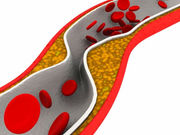Quantification of CAC score can improve stratification for those at high, low risk for events
MONDAY, Sept. 26, 2016 (HealthDay News) — European and American guidelines lead to different recommendations for statin therapy, according to a study published online Sept. 21 in JACC: Cardiovascular Imaging.
Amir A. Mahabadi, M.D., from the University of Duisburg-Essen in Germany, and colleagues assessed the coronary artery calcification (CAC) score of 3,745 subjects from the population-based longitudinal Heinz Nixdorf Recall cohort study without cardiovascular disease or lipid lowering therapy at baseline. Based on individual baseline characteristics, statin indication was determined according to 2012 European Society of Cardiology (ESC) and 2013 American Heart Association/American College of Cardiology (AHA/ACC) guidelines.
The researchers observed a lower frequency of statin recommendation with ESC versus AHA/ACC guidelines (34 versus 56 percent; P < 0.0001); in subjects with statin indication by both guidelines, low CAC score (<100) was common (59 and 62 percent, respectively). One hundred thirty-one myocardial infarctions occurred during 10.4 ± 2.0 years of follow-up. For ESC recommendations, risk was differentiated by CAC score of 100 among subjects without and those with statin indications. AHA/ACC CAC score of 100 stratified proportions experiencing events among those with statin indication; the event rate was low for subjects without statin indication.
“Current ESC and AHA/ACC guidelines lead to markedly different recommendations regarding statin therapy in a German primary prevention cohort,” the authors write. “Quantification of CAC score in addition to the guidelines improves stratification.”
Full Text (subscription or payment may be required)
Editorial (subscription or payment may be required)
Copyright © 2016 HealthDay. All rights reserved.








